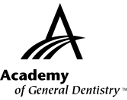|
Exercise No. 339
Subject Code: 490
Periodontics
The 15 questions for this exercise are based on the article, “Management of phenytoin-induced gingival enlargement: a case report”, on pages 61-67. This exercise was developed by Gustav Gates, DDS, MAGD, in association with the General Dentistry Self-Instruction Committee.
|
Reading the article and successfully completing the exercise will make enable you to:
- identify the applications for high-powered magnification in general dentistry;
- recognize the advantages of using high-powered magnification in general dentistry; and
- understand how high-powered magnification can enhance patient treatment.
|

